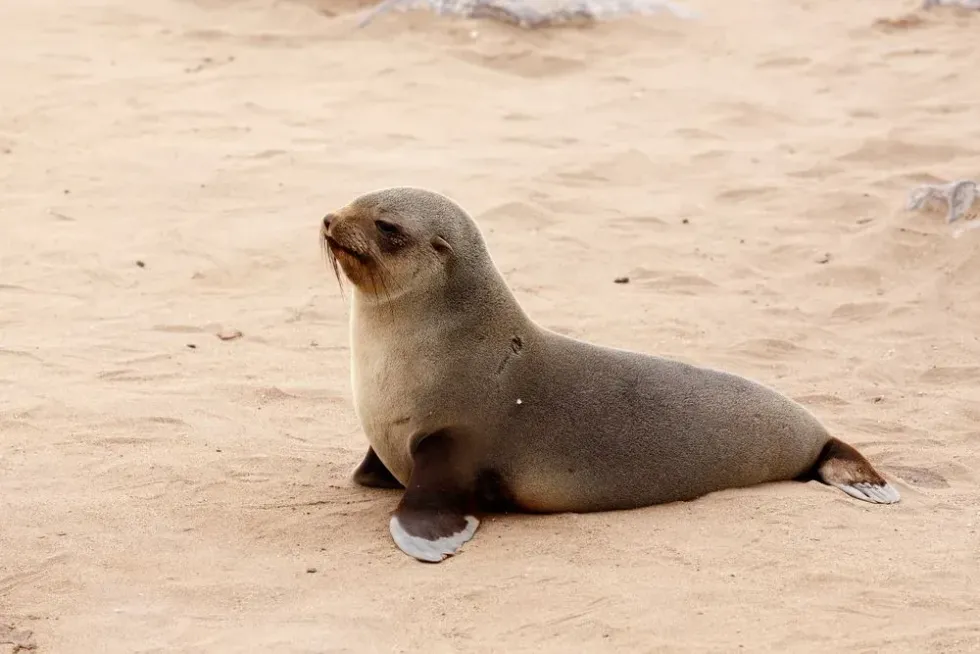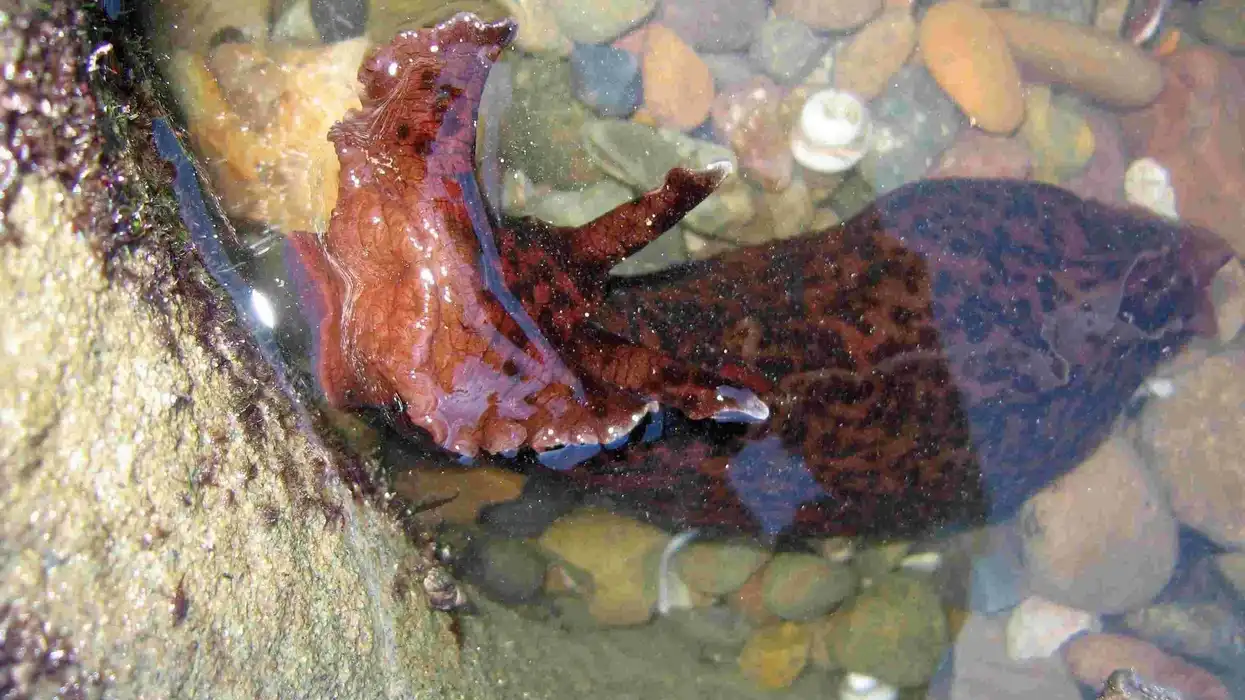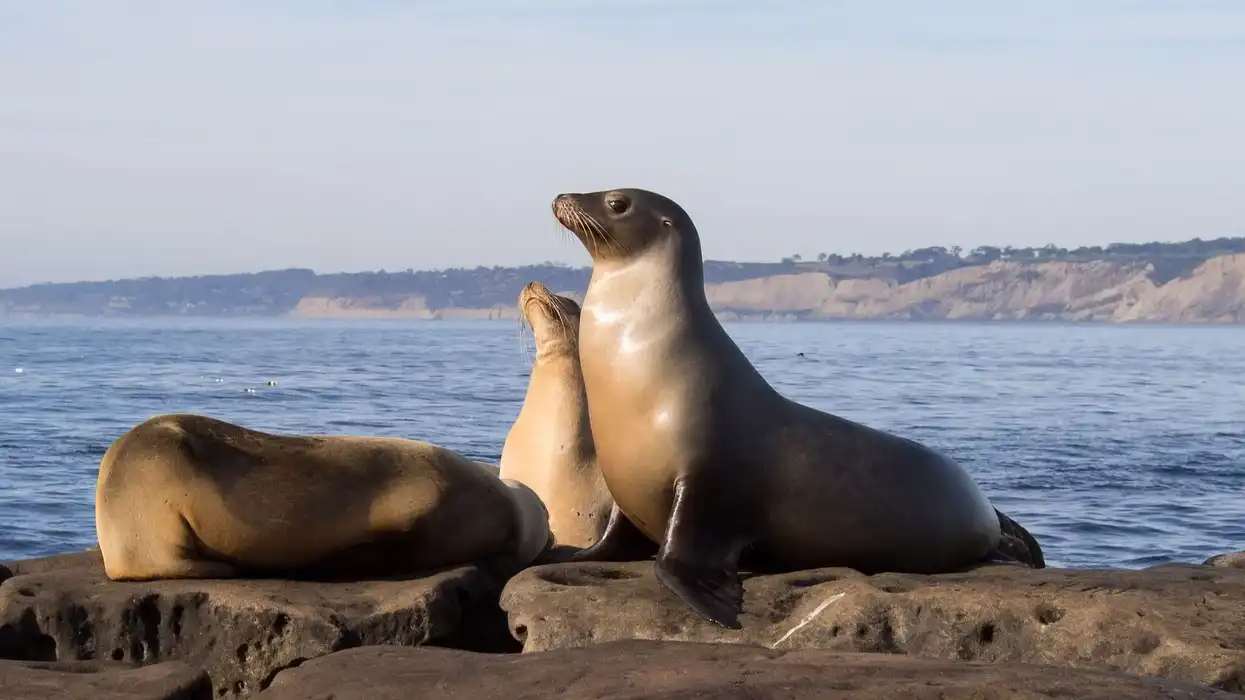Want to learn about an animal that is smarter than a dog and just as cute? Read on to find out what it is!
The brown fur seal belongs to the Otariidae family and to the species of Arctocephalus pusillus, found in Australia and South Africa.
There are two subspecies of the brown fur seal which are the Cape fur seal and the Australian fur seal. The two subspecies are very similar to each other in terms of physical appearance, but they occupy different ranges.
The Cape fur seals are found near the coast of Africa in the south and southwest, in Namibia, and as far as Port Elizabeth, whereas the Australian fur seal can be found along Australia's southern and southeastern coasts.
The brown fur seal distribution also occurs in New South Wales, Victoria, Tasmania, and Gran Canaria of the Canary islands. The most noticeable difference between the two subspecies is that the Cape fur seal has a larger crest than the brown fur seal.
The brown fur seal is also called the Australian fur seal or the South African fur seal.
These seals spend most of their time ashore and take short foraging trips once in several days. They prefer being in cold waters and are great swimmers.
When on land, they use their flippers to move around. Seals are very inquisitive and friendly animals. While foraging, they often come across scuba divers and stick around to play with them.
They swim around scuba divers in circles and interact with them for several minutes underwater. On land, they are afraid to approach humans and fright easily if they see a human approaching them.
Learn more about some other animals from our tayra facts and puma facts pages.
Brown Fur Seal Interesting Facts
What type of animal is a brown fur seal?
The brown fur seal is a species of fur seal belonging to the Animalia kingdom.
What class of animal does a brown fur seal belong to?
The brown fur seal belongs to the mammal class of animals.
How many brown fur seals are there in the world?
The population size of brown fur seals as of now is approximately 2,120,000.
Where does a brown fur seal live?
The brown fur seal range occupies the coast of South Africa, Angola, and Namibia. They are also found along the coasts of New South Wales, Tasmania, and southern Australia.
What is a brown fur seal's habitat?
The brown fur seal habitat includes rock ledges, rocky islands with pebble and boulder beaches, reefs, and sandy beaches across a sea.
Who does brown fur seal live with?
Brown fur seals live in groups called colonies. Each colony has about 50-1500 seals. Smaller groups of seals are called a pod or a bob.
How long does a brown fur seal live?
The lifespan of this mammal extends from 19-21 years.
How do they reproduce?
Seals of this species reach sexual maturity when they are three to six years of age. The breeding season begins in mid-October.
This is when the male seals or bulls come ashore and engage in combat to establish their mating territories or breeding colonies. After this, the seals fast and do not eat until the mating season which begins late November and early December.
When the female seals or cows arrive ashore, they too spar with each other to establish birthing territories.
Once they all have their own specific territories, they select their mating partners. The females select their partner or males based 0n the value of their breeding colonies.
Almost 82% of seal pups each breeding season are born off males with territories near the shore. Bulls or male seals are polygamous and mate with multiple females.
After 12 months of gestation, a single pup is born from each female seal. The females spend several days ashore to nurse their pups and the other days foraging at sea.
The foraging trips last for three to four days during summer and up to seven days during winter. Seal pups are weaned or become independent when they are one year old.
What is their conservation status?
The IUNC Red List of Threatened Species has classified brown fur seals as a species of Least Concern. Australian fur seals were hunted on a large scale from 1798-1825 for commercial reasons.
This practice was later stopped in 1923. The population size of the Australian fur seal (Arctocephalus pusillus doriferus) as of now has increased to 120,000 seals.
The Cape fur seal population has increased drastically over the last few years and its current population size consists of about 2,000,000 seals. In general, the overall population of brown fur seals is increasing.
The potential threats to this species includes pollution of their natural habitat and water pollution such as oil spills, parts of fishing nets, fishing lines, and plastic. They also become entangled in nets while taking fishes from them.
The entangled fish net suffocates the seals and eventually, they drown to death. Killing brown fur seals is illegal and a punishable offense but some fishermen kill seals regardless of the laws in order to reduce competition and catch as many fishes as they can in order to earn their profits.
Predators like killer whales, sharks, and leopard seals pose a threats to this species as they prey on them, especially young pups since they are slower and easier to hunt.
Brown Fur Seal Fun Facts
What does a brown fur seal look like?
Adult males are light brown with a gray undertone, their belly is dark brown, and they have a mane around their neck. Adult females have a uniform brown color with a slightly darker belly.
An adult male's head is larger and broader than a female's. Males also have low brows which the females lack and they have pointed snouts that are slightly turned up.
They have external ear flaps known as pinnae and long whiskers called vibrissae that can extend past their ear flaps, especially among the males. Their fore flippers are significantly larger than their hind flippers and they are dark brown in color.
How cute are they?
They are the cutest! These mammals look absolutely adorable with their large black eyes, cute tiny ears, and long whiskers. A seal pup is even cuter than an adult seal. They are basically sea dogs and sea puppies.
How do they communicate?
Brown fur seals use sounds to communicate with each other. Seal pups use a distant call to help their mothers find them ashore after they return from foraging.
Even if the adult females cannot hear the call from its pup, they can find them using their sharp sense of smell. Seals make loud noises and can control the decibel of these sounds depending on the environment they are in.
How big is the brown fur seal
The brown fur seal is 4-9 ft (1.2-2.1 m) long. They are nearly two times bigger than sea lions!
How fast can they swim?
Despite having a large body covered with fur, this species can swim really fast at a speed of 12.4 mph (20 kph).
How much does a brown fur seal weigh?
An adult brown fur seal weighs approximately 700 lb (kg).
What are their male and female names of the species?
Male seals are called bulls and female seals are called cows.
What would you call a baby brown fur seal?
A baby brown fur seal is simply called a pup.
What do they eat?
The brown fur seal diet includes schooling fish, anchovies, hake, squid, octopus, pilchards, and birds.
The leopard seal, sharks, and killer whales prey on this species of seals.
Are they poisonous?
Yes! The majority of animals living near a coastline are poisonous, including brown fur seals. They have a high level of concentrated poison. Their poison can be held responsible for various diseases and infections.
Would they make a good pet?
Keeping them as pets is not a great idea. Even though they look cute, they can be aggressive and cause some serious damage. A seal bite can cause a serious infection. Besides, they like living in open spaces with a suitable environment and with their colonies.
Did you know...
While foraging, the brown fur seal can dive up to 273 ft (500 m) deep.
Male pups are longer and heavier than female pups.
Seals are brilliant animals. They are considered to be smarter than dogs!
South African fur seals were hunted for their skin, pelts, and fur.
Seals are often confused with sea lions due to their uncanny resemblance.
Are they aggressive?
They are inquisitive, friendly, and loving animals. However, if they feel threatened or are frightened by something they are not familiar with, they might become a little aggressive in order to defend themselves. Australian fur seals are also harmless and tend to run away if threatened.
What are the types of fur seals?
There are nine subspecies of fur seals.
The names of those subspecies are the Antarctic fur seal (Arctocephalus gazella), the South African fur seal (Arctocephalus pusillus), the Australian fur seal (Arctocephalus pusillus doriferus), the Galapagos fur seal, the Guadalupe fur seal, the Juan Fernandez fur seal, the New Zealand fur seal, the South American fur seal, the Subantarctic fur seal, and the Northern fur seal (Callorhinus ursinus).
Here at Kidadl, we have carefully created lots of interesting family-friendly animal facts for everyone to discover! Learn more about some other mammals from our blue wildebeest facts and African wildcat facts pages.
You can even occupy yourself at home by drawing one on our free and printable brown fur seal coloring pages.










